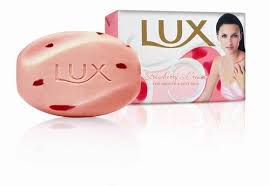Iconic Ads: Conservative Party – Labour Isn’t Working

This highlighted the Labour Party’s traditional commitment to full employment or lack of it leading to the Winter of Discontent in 1979
In the 1970s, unemployment dominated the Conservative Party’s campaigning not once, but twice. Expecting James Callaghan to call an early election in fall 1978, they plastered Britain’s billboards with a snaking “dole line” and the slogan “Labour Isn’t Working.” This highlighted the Labour Party’s traditional commitment to full employment. When Labour won their second election in October 1974, the unemployment rate was 2.7%; by October 1978, it had risen to 5.9%.
While the autumn election never happened, the ensuing ‘Winter of Discontent’ provided the Conservatives with an opportunity to capitalize on Labour’s obvious disappointment. That image, resurrected with a reminder that ‘Labour Still Isn’t Working,’ is now the most well-known.
The majority of creative departments are on the left side of the political spectrum. Andrew Rutherford and Martyn Walsh, in Saatchi and Saatchi’s, saw the need for change and they took the task.
The brief was the same for all political parties: don’t make any promises you won’t be able to meet. Rather, focus on the opponent’s bad track record.
Rutherford had a competitive streak, and he came in the next Monday morning with a slew of ideas and lines he’d worked on over the weekend. “Labour isn’t working” was one of them.
Walsh liked it right away and drew it up as a realistic photograph of a large throng waiting in line to enter an employment centre with the headline underneath.
Because Charles Saatchi took a genuine, personal interest in what was allowed to leave his agency, the work produced by Saatchis was consistent with excellent quality. When he saw the poster, his immediate reaction was “yes,” but one could see it was half-hearted.
The proposal was a hit with the account team. But the poster sat in Charles’ office for a week or so, and they didn’t hear anything else. Finally, it was proposed that Walsh take another look at the layout.
Walsh had some more ideas, so he put out a new poster, this time with a large, long snaking line leading towards, and under, a banner that said “Unemployment Office,” all set against a white background. He wrote the headline in one continuous line over the photo.
The concept was made clearer by spelling out “Unemployment” on the banner.

Because it was ultimately given to the Conservatives and they adored it, Walsh concluded that Charles approved of it. Margaret Thatcher, on the other hand, was reported to be unsure about it, believing that mentioning your opponents in the headline was somehow supporting them.
Nonetheless, they went ahead.
The Conservative Central Office put the team in touch with a local Hendon Conservative organisation, which agreed to furnish 100 to 150 unemployed persons.
Bob Cramp, the photographer, obtained permission to shoot on an open grassy area of the Welsh Harp, near Hendon, to ensure that everyone could attend.
They got the awful news three days before the filming that they would only be able to get 30 to 40 people to create our queue. They had to go forward because the poster sites were already booked. But, as fate would have it, the issue became the poster’s creation.
They planned to shoot the entire queue with a 10 x 8 plate camera for image quality. They came up with the idea of setting out a long length of rope in a snake-like configuration right across the park area, photographing 30 or so individuals at different spots along with it. Then stripping them together to construct the queue in those pre-Apple Mac days.
Walsh walked into the studio after purchasing rope from an ironmonger on Charlotte Street to figure out a queue shape. The headline at the top of the poster looked unbalanced with the idea of a thinner, smaller lineup, so he broke it into two lines and projected it under the Grant Projector to magnify it. The banner took on a completely another persona as if it were a photograph coming into focus.
The title was suddenly more attention-getting by raising its size. The concept was the same, but the dynamics had flipped: instead of a big image idea with a smaller headline, it was now a big headline with a small picture. The end product, however, was a more powerful depiction of the entire concept.
The photoshoot and final “strip up” went off without a hitch, and the rest, as they say, is history.
When it was first released, it caused quite a commotion, with then-Chancellor of the Exchequer Denis Healey taking to the House of Commons to denounce it as a “soap powder advertisement.”
Every newspaper put it on the front page, and every TV station broadcast it, and the more Labour talked about it, the more press it got. By the end of the first week, the poster had become famous across the United Kingdom.
So a fake poster helped to trounce a government.



